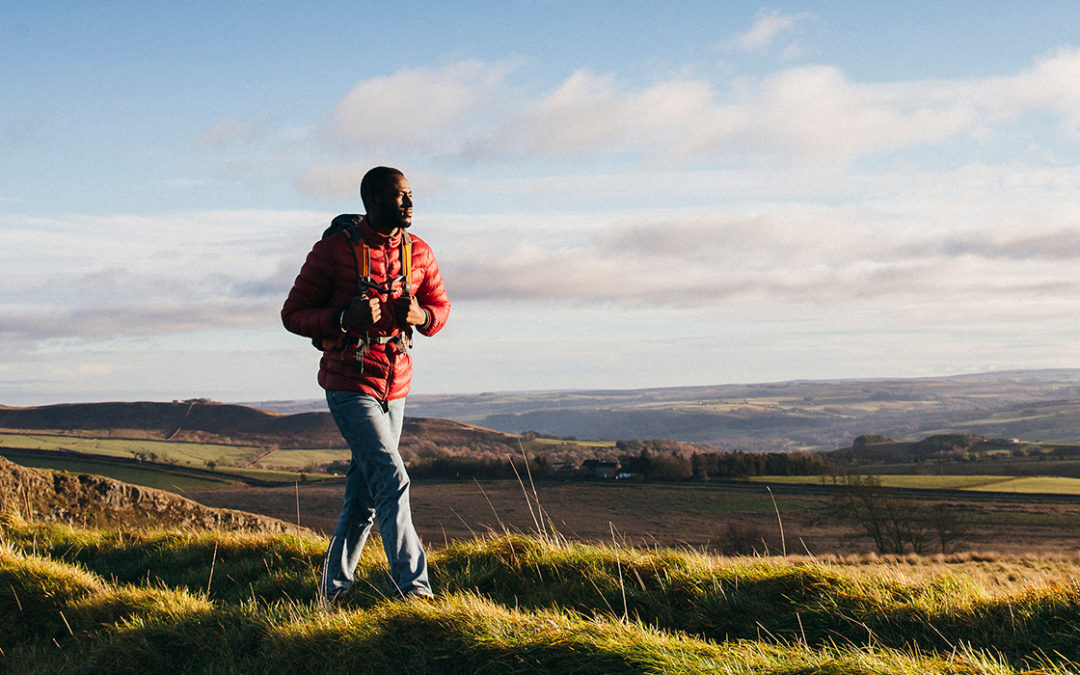Not only is walking good for your physical and mental health, but it’s also free, easy, and convenient too. It can also be a great way to explore your local area and is better for the environment than driving or taking public transport. Here health benefits of walking and some top tips for getting started.
WHAT ARE THE BENEFITS OF WALKING?
As with most forms of physical activity, walking can have a whole host of benefits for both your physical and mental health.
MENTAL HEALTH BENEFITS
Exercise releases feel-good hormones, and studies have shown it can:
- Improve your mood
- Reduce stress.
- Manage anxiety
- Help you sleep better
- Increase your energy
- Help you to cope with difficult times
- Improve your confidence and self-esteem
- Reduce the risk of depression
PHYSICAL HEALTH BENEFITS
As well as helping to look after your mental health, walking also helps to look after your physical health, by helping you to:
- Maintain a healthy weight
- Keep your muscles and bones healthy
- Increase your cardiovascular fitness
It can also reduce your risk of developing certain health conditions, including:
- Cardiovascular diseases such as high blood pressure and stroke
- Type 2 diabetes
- Some Cancers
HOW MUCH WALKING SHOULD I DO?
The UK Department of Health recommends that adults get active every day. You should aim to do at least two and a half hours (150 minutes) of moderate intensity activity a week. You can break this down into sessions of 10 minutes or more and spread this out across the week. Moderate intensity means:
- Your breathing is faster
- Your heart rate is faster
- You feel warmer
- Walking can count towards moderate-intensity exercise – so long as it’s brisk.
HOW TO GET STARTED WITH WALKING FOR EXERCISE
The good news is you don’t have to climb mountains to feel the benefits of walking – any amount of physical activity is better than none.
So, if you’re new to walking, start slowly and gradually increase how much you’re doing each week. Think about your daily routine and where you can include some walking. You could try:
- Taking a walk before work – especially if you’re working from home and no longer commuting
- Walking to work, the station or bus stop if you need to travel to your place of work
- Using your lunch break to go for a stroll
- Going to the shops on foot rather than taking the car when picking up essential items
- Walking with someone from your household or bubble so you have someone to make sure you go for a walk
- Listening to music, podcasts or audiobooks while you walk
- Setting yourself a daily step goal and tracking your steps using a fitness tracker, app or pedometer
- Using a walking app to help you discover new routes in your local area
WHAT SHOULD I WEAR FOR WALKING?
You don’t need to buy any expensive gear to start walking, but the right clothing can help to make your walk more enjoyable.
Wear a good pair of shoes or trainers. Any pair will do, as long as they’re comfortable, provide adequate support and don’t rub or give you blisters
If you’re planning on walking through muddy fields or mountains, you may want to invest in a good-quality pair of walking boots
Socks are also important as they will prevent blisters, the best socks don’t bunch up in your shoes and should take sweat away from your feet
Get some good windproof and waterproof layers to help you keep warm and dry
If it’s a sunny day, take some water, sunscreen, a hat and sunglasses to stay safe in the sun
If you’re walking in the early hours of the morning or evening when it’s dark, wear reflective clothing so you can be clearly seen


Recent Comments